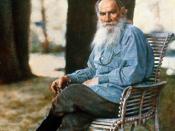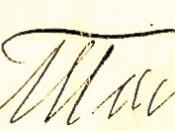Art and Culture
No one ever asked the question, "Do all people have culture?" until the end of the 19th century. E.B. Tyler, world famous anthropologist from Oxford University in England, discussed the culture of primitive people. Before the writing of his book, Primitive Culture, never before had culture been associated with people from outside of the west. It was common knowledge back before E.B. decided to write his book that one needed an education in order to be considered to have a culture. Instead, new definitions on the details of culture began to develop. Now, people started to express that culture is the actions one chooses to define their character. Thus, however one chose to live their life was their "new culture." On top of this, not only is it how they live their lives, but it is the mental capacity with which they do it. What could be a better definition of culture than, the meanings and values that people contain with which they decide to move their lives?
In order for culture to survive a man, family, or generation, tradition and language become an integral part to its longevity.
And by language, I do not just mean the verbal articulation of men and women as means to communicate. Instead, I am talking about all means of communication; music, architecture, poetry, sculpture, etc. These carriers of culture represent the meanings and values of both the artist creating, and more importantly, the meanings and values of all of his or her civilization at that moment in time. Each form of art described above has a story to it. The story is the lives and times of the people in the moment in which the work was created. These people are attempting to justify and explain the values that...


